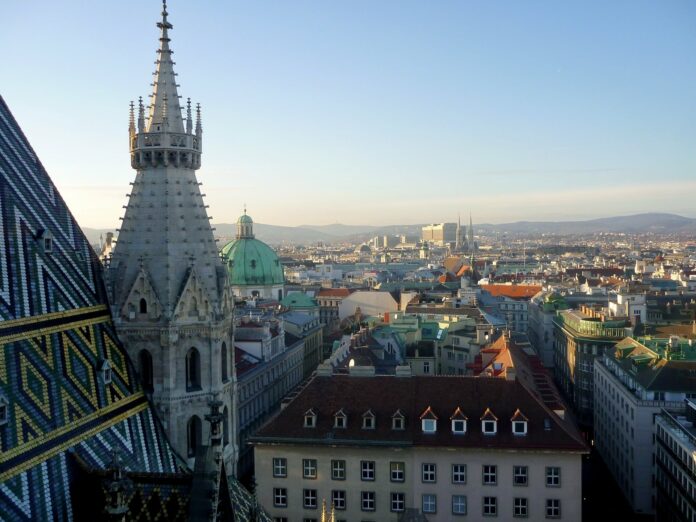Seven out of ten of the best cities listed in the ranking are located in Western Europe, including three in Germany.
Mercer, a global leader in human resource management consulting services and a member of the Marsh McLennan group (NYSE: MMC), has published the Quality of Living ranking, which provides information on the best places to live in the world.
This year’s ranking is again topped by Vienna, followed by Zurich, with Auckland and Copenhagen taking third and fourth places respectively. The top five are completed by Geneva, further underlining Switzerland’s reputation as a country guaranteeing a high quality of life.
“The Mercer ranking shows that countries with a high quality of life provide their citizens and foreigners with access to excellent health care, education, infrastructure, and social services,” comments Yvonne Traber, Partner and Global Mobility Leader at Mercer.
Among the largest metropolises in the world, with a population exceeding ten million inhabitants, Paris (32) took the first place, followed by New York (40) and London (45) – all located in the top 20% of the best cities. Despite their status as desirable locations, cities of this size often face certain infrastructural challenges.
“The current landscape is affected by geopolitical upheavals, natural disasters, and economic instability, all of which significantly impact cities and their ability to attract and retain talent. Many workers are reassessing their priorities and evaluating the quality of life provided to them and their families at the places they live and work. For many employers and their employees, these factors facilitate decision-making when considering international assignments,” adds Traber.
Małgorzata Ciarka – Career Business Leader at Mercer Poland adds: “Quality of life is one of the most important issues taken into account by both employees and employers when making decisions about cooperation. Both employers’ investments and employees’ expectations should be considered in the context of location, being aware that the packages offered should be supplemented with those quality elements that are most lacking – such as health benefits.”
In response to employers’ interest in the area of sustainable development, Mercer also prepared a ranking of the most environmentally friendly cities in the world. Canberra, Oslo, Adelaide, Helsinki, and Ottawa were distinguished for their efforts to reduce air pollution and improve the availability and quality of water.
In Europe, Vienna was selected as the city with the highest quality of life, known for its rich history, impressive architecture, and vibrant cultural scene. Zurich in Switzerland came in second place, attributed to its political stability, cleanliness, and infrastructure.
Vancouver (8th place) is the highest-rated city in North America, appreciated for providing its residents with a unique combination of outdoor recreation and urban style, ensuring a high quality of life. San Francisco in California (37th) took the first place in the United States thanks to its well-developed infrastructure, friendly climate, and excellent air quality. Montevideo in Uruguay (89th) is the highest-ranked city in Latin America.
Dubai (79th) and Abu Dhabi (84th) in the United Arab Emirates lead the cities in the Middle East, both known for their modern infrastructure and diverse immigrant communities. Just behind them is Port Louis in Mauritius (88th), with the best quality of life in Africa.
Singapore, offering a clean and safe environment combined with modern infrastructure, takes the first place among Asian cities and is 29th in the ranking. The highest-rated city in the Pacific region is Auckland (3rd) due to its excellent health care and exciting cultural offer.
The Mercer Quality of Living study assesses the living conditions in more than 450 cities around the world to help firms calculate fair and consistent allowances for employees on assignment. Living conditions are analyzed based on 39 factors, divided into 10 categories: political and social environment, economic environment, socio-cultural environment, medical and health considerations, schools and education, public services and transportation, recreation, consumer goods, housing, and natural environment.
The data collected in this year’s study was analyzed between September and November 2023 and will be regularly updated to reflect changing circumstances. Evaluations will be revised to reflect significant changes in political, economic, and environmental conditions. All indicators were calculated using New York as the base city.
Information and data obtained through the quality of life reports are informational and intended for use by international organizations, government agencies, and local governments. They are not intended for use as a basis for foreign investments or tourism. Mercer is not responsible for any decisions or actions taken based on the results and information contained in the reports. Although the publications were prepared based on sources, information, and systems considered reliable and accurate, Mercer accepts no responsibility for the validity/accuracy of the resources/data used to prepare the reports. Mercer and its associated entities make no representations or warranties regarding the reports.


















